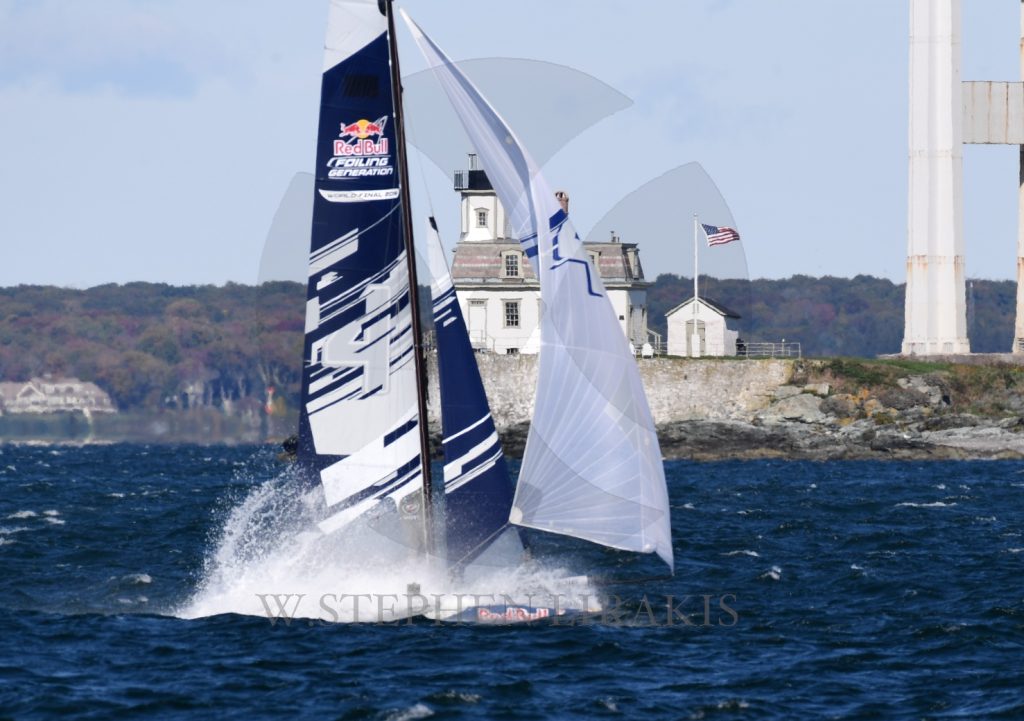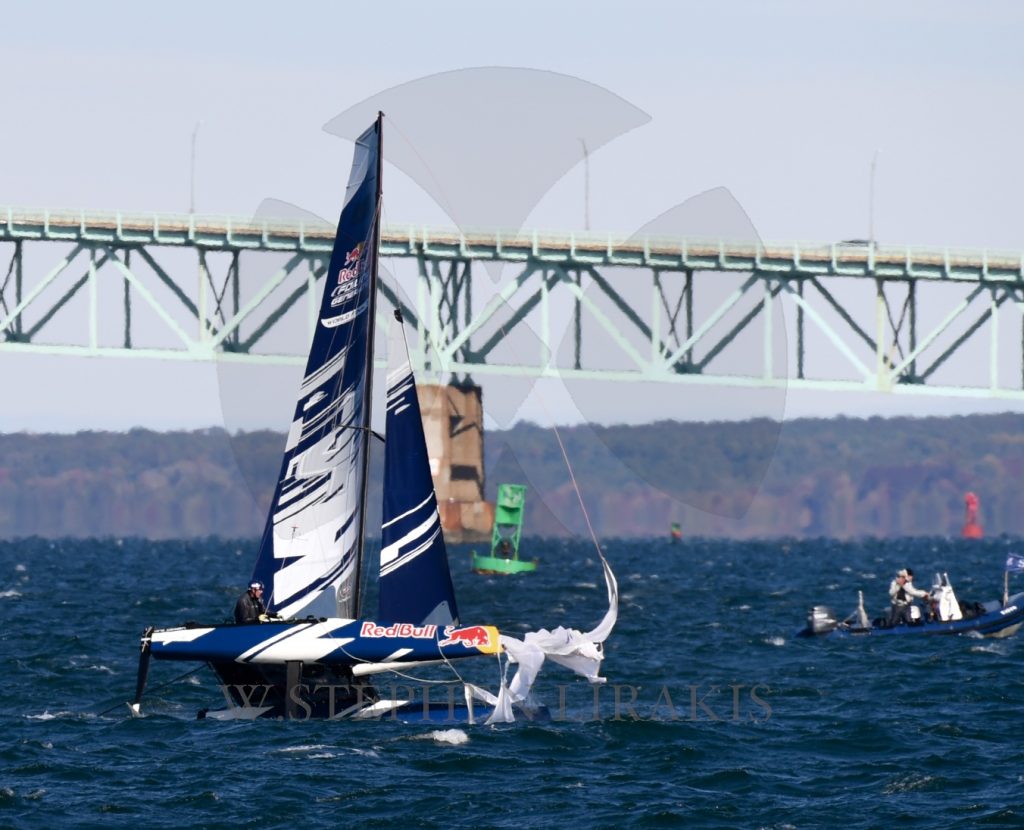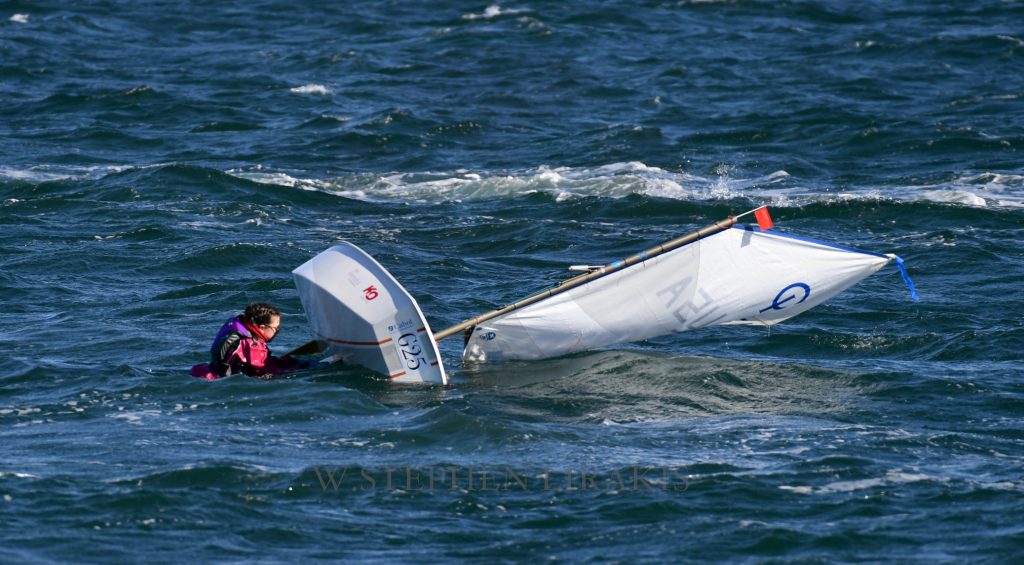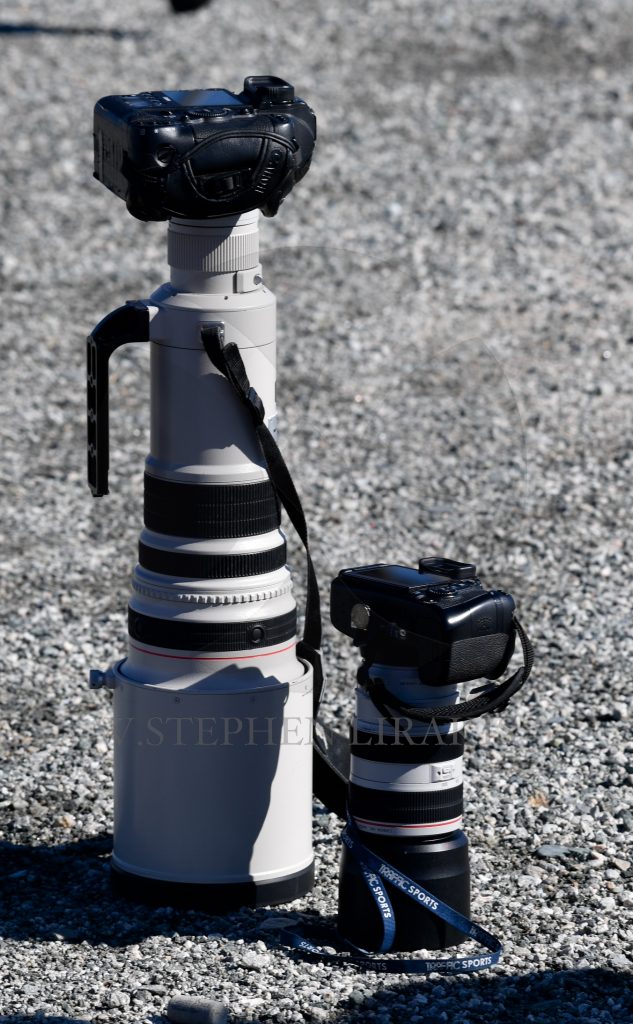









I crossed the Atlantic in 11 1/2 days this summer. For someone of my generation this was special. I never expect to repeat this experience. But I am still on a slow boat in today’s world.
The America’s Cup will never go back to non foiling boats. I still predict that the next Olympics will have at least one foiling class, if not two. No one is looking back, unless it is to true classic yachts. That is for different reasons of beauty and elegance.
Hydropetiere set the new standard. Foils are in. To go fast you must reduce wetted surface. Will SpeedDream work as hoped? No matter what sailing has changed dramatically in my lifetime. And the change has accelerated.
Oracle’s L-foil failure on their AC72’s first day out was no minor snafu. With nearly a two-month build time for the hyper-engineered appendages, their engineers and designers must be freaking out right now trying to understand exactly how and why such an important structure broke. With the foil carrying more than half the weight of the boat in fully foiling conditions, it’s akin to a brand new Formula One car losing its front wheels on the first-ever test lap. Like Artemis’ expensive and time-consuming wing failure and repair, Oracle could be looking at the loss of a ton of development time exactly when they need it most: When the breeze is pumping through the Golden Gate. We’ll see what the spare looks like – it’s very easy to stay posted on the up-to-the-minute action with all the boats here.
ETNZ seems to be getting the most out their Auckland testing with minimal drama, but it’s worth noting that these boats are all just one bad decision away from having a long repair bill, especially when they’re doing 40 knots, 4 feet above the water’s surface, held up by just two tiny blades of carbon. For anyone still wondering if ‘fully foiling’ is nothing but a head fake, we turn to resident C-Class mastermind ‘blunted’ – who’s been down the foiling road before with the C-boat Off Yer Rocker.
Clean speculated once that we built ‘off yer rocker’ as a head fake. Well if it was, it was a really expensive practical joke, on us. Suffice to say it was not intended that way by our team. We were chasing some very “real” benefits on the course. We just did it wrong.
I’ve never really said it publicly till now, ‘cause everyone knows I am “the wing nut” and I get all hot and bothered about wings, but from about 4 seconds after the AC72 rule was cast everyone who was anyone knew the design race would be won in the water with foils, not in the air with wings. You only need to look at a few rudimentary VPP graphs to see the difference between foiling and floating to know that you want to fly as much boat as you can, because the drag goes up so fast in float mode and it goes up a lot slower in foiling mode. The big problem is control, because the Rule does not allow actuated surfaces [like a moth’s flaps –ed] to control ride height you have to figure out how to manage the whole package to keep it on its feet, in a safe enough mode you can put your foot on the pedal.
We went back to traditional in the C for a couple of reasons; the biggest being that it didn’t work in our chosen configuration. I am not convinced the C-cat has enough power to make it work well enough at all, at least for Fredo and I, cause of how we like to sail the boat downhill. The 72’s can unfurl a nice big code zero and that offers a lot of power to get up on the foils efficiently, now the trick is to ride a bike with no handlebars so to speak. Foiling without automatic ride height control really is, “Look ma, no hands!”
My guess is the focus on foiling will be downhill as upwind they may have to trade away too much righting moment to make it worth it. I haven’t seen any real numbers recently so it’s difficult for me to say either way. For righting moment remember that your foil as it kicks in essentially moves the center of floatation of the hull towards the middle of the foil. When 100% up on a foil the boat is rotating around a point between the middle of the upright foil and the horizontal foil, well below and inside the center of actual buoyancy. As such you lose some leverage and therefore lose righting moment so you can apply a bit less power, so the trade off needs to be worth it to go for it.
So yes, my vote is anybody who is serious will be foiling, as soon as they are going downhill.
09/04/12